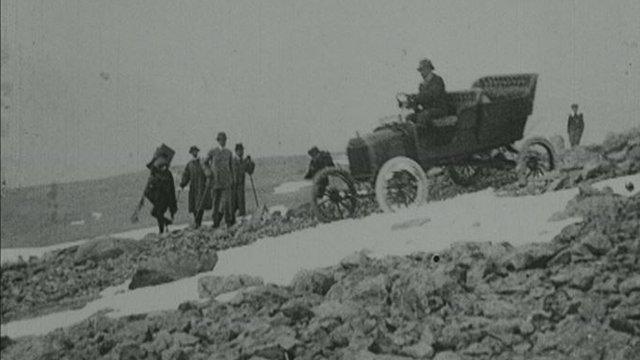Why a Model T was driven to the top of Ben Nevis
- Published
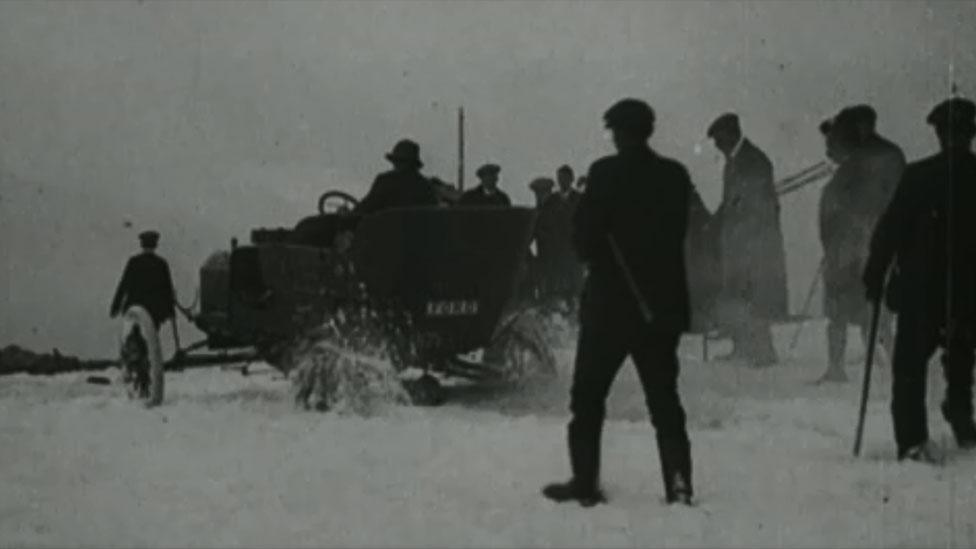
The descent of the Model T from the summit of Ben Nevis was filmed
In May 1911 a Ford Model T car was driven to the summit of Ben Nevis. The feat drew a large crowd to Fort William - and there are hopes that a new statue will help bring more visitors to the town.
The idea of driving a Model T to the top of Britain's highest mountain was the brainchild of Henry Alexander, a motor dealer in Edinburgh.
The Model T had rolled off a production line in the US for the first time three years earlier, and Alexander wanted to mount a publicity stunt to demonstrate that the imported, mass produced American cars were superior to hand-crafted British ones.
Legend has it that he challenged his son Henry Alexander Jr, who was in his 20s, to take one of the cars to the summit of Ben Nevis - or else he would stop his allowance.
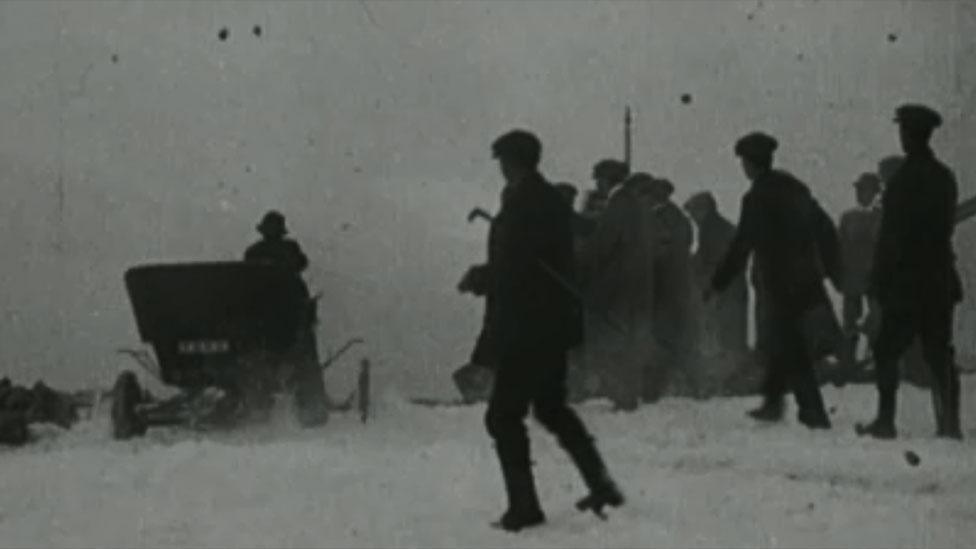
Deep snow was an added obstacle to the 1911 venture
Alexander Jr drove a Model T from Edinburgh to Fort William for the beginning of the audacious attempt.
He then faced an uphill battle over bogs, burns, heather, rocks and snow over a distance of about five miles (8km) from sea level to the 1,345m (4,413ft) mountain top.
Getting to the top would take Alexander and his team five days.
"They went from Torlundy, near Fort William, where the ground is relatively flat, though slightly boggy, before making the usual zig-zag route to the summit," says Chris Robinson, chairman of the Ben Nevis Model T Ford Project Team.
"It took him several attempts over the five days."

The lost film
Footage from the BFI shows the journey of a Ford Model T car driving down Ben Nevis in 1911
The journey to the summit was not filmed, but the descent was captured on camera.
The footage of the bone-shuddering drive back down the mountain was later thought to have been lost, before it was rediscovered in 2015.
Motoring Over Ben Nevis (1911) is part of the BFI National Archive and is available to watch for free as part of Britain on Film on BFI Player, external.

At the end of each day the car was left where it was on the mountain, and Alexander Jr headed back to Fort William for the night. Some of his team are thought to have stayed at the summit's Ben Nevis Observatory Hotel, which closed in 1916.
Mr Robinson said that when they reached the summit, the press were "assembled to report on Alexander's achievement, and to witness the Model T's descent from the summit".
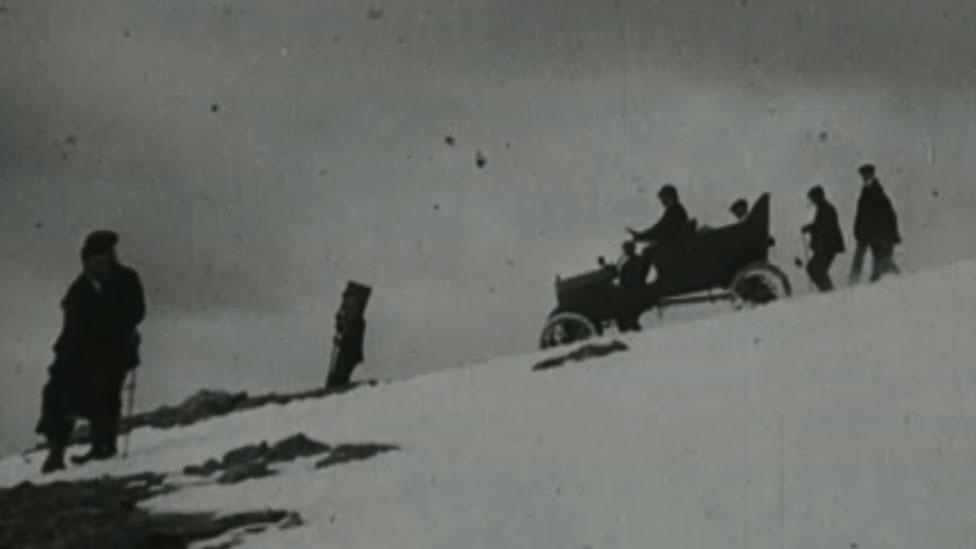
The film from 1911 had thought to have been lost before being rediscovered
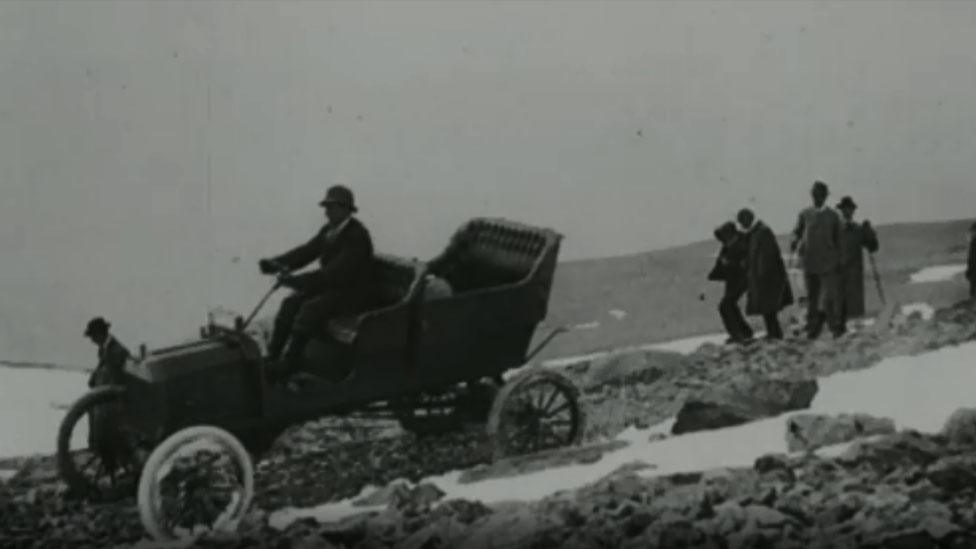
That descent was achieved in just one working day.
Mr Robinson said the footage showed people standing on the roof of the Observatory, because the snow was 5ft deep at the top.
In the film, Motoring Over Ben Nevis, Alexander Jr is seen being waved off from the summit by a crowd.
Rear wheels spinning, he drives the vehicle over snow before bouncing down a scree slope.
The film also shows a peat bank being dynamited to clear a path for the Model T - something that would never be allowed in today's more environmentally-enlightened times.
The Model T crossed a burn on two planks, and the wood can be seen bending under the weight of Alexander Jr's car.
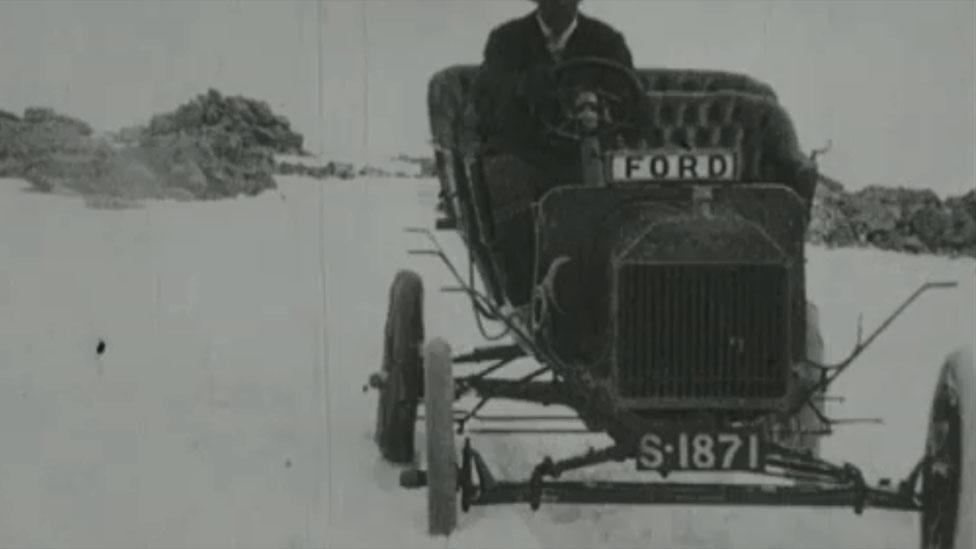
The film, Motoring Over Ben Nevis (1911), is in the care of BFI's archive
When he drove the vehicle back into Fort William, hundreds of people had gathered to applaud his achievement.
A piper and a drummer marched ahead of the car, which was flying Stars and Stripes and Lion Rampant flags.
After adjusting the brakes, he then drove the Model T back to Edinburgh.

Heather, bogs and rocks had to crossed on the journeys up and down Ben Nevis
Mr Robinson said: "His achievement was not just a triumph for Ford.
"Companies whose products had been used, such as the company that provided the engine oil, used the feat to promote those products."
But not everyone among the press corps wrote in glowing terms about the venture.
It is said that a correspondent from The Times filed a "rather abbreviated report", a response to having been thrown by the pony taking him to the summit. The reporter landed in a bog and broke his nose.
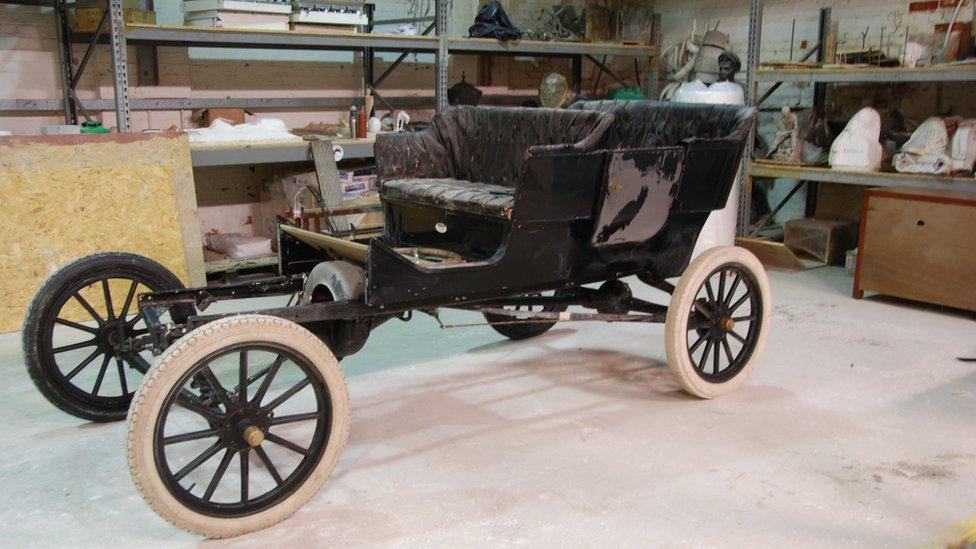
A replica of a Model T carried to the summit of Ben Nevis went on to help guide the making of a new bronze sculpture
In 2011, a team of vintage car enthusiasts sought to celebrate Alexander Jr's exploits.
They had hoped to have a Model T flown to the summit by helicopter, but did not get permission to do this.
So instead, a replica Model T owned by Neil Tuckett was dismantled into 77 pieces and the car, minus its engine, was carried to the summit by about 60 volunteers.
The chassis alone needed at least four people to lift, while other volunteers carried wheels and seats, and other parts of the car were carried in bags.
The vehicle was reassembled at the top for a photo opportunity before being taken apart again and carried back down - all in strong winds, hail and snow.
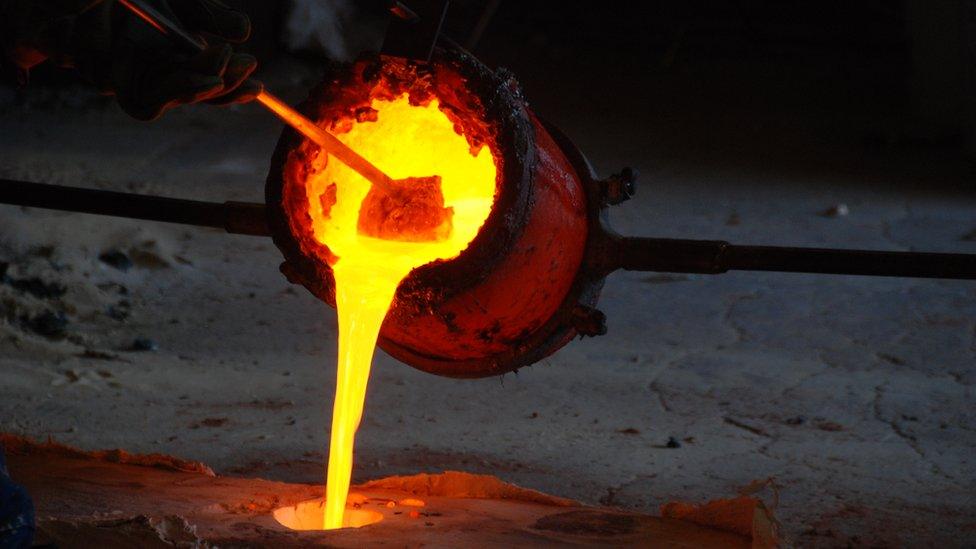
A foundry in Edinburgh has made the bronze Model T statue

The Model T involved this modern day venture was then put on display for a time in the West Highland Museum, a move that got the cogs turning again in heads of local residents and Model T enthusiasts.
An architect involved in a project to revamp the centre of Fort William drew a sketch that featured a Model T parked in the town's square. The illustration inspired an idea for a bronze statue to commemorate the 1911 drive.
Over the course of the next four-and-a-half years, £55,000 was raised to pay for the statue.
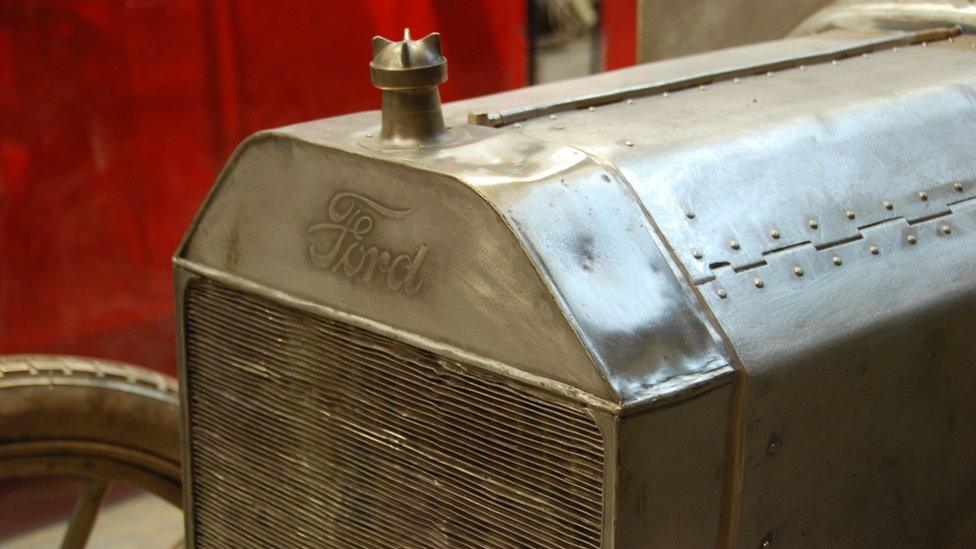
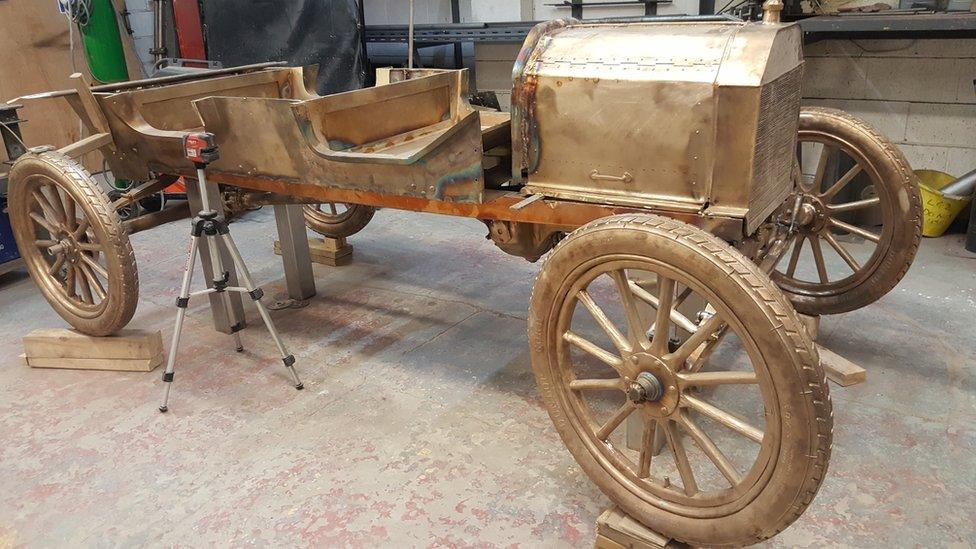
Early stages of making the bronze statue
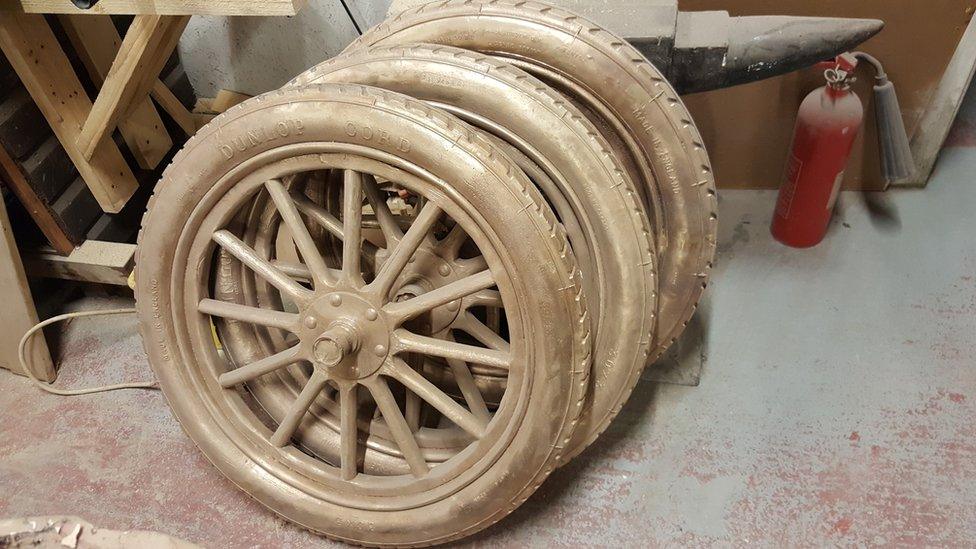
The wheels for the statue
Powderhall Bronze, a foundry in Edinburgh, was chosen to make the statue of the car, with Alexander Jr behind the wheel.
The making of the three-tonne statue has been overseen by Mark Stoddart, a designer and artist based in Ladybank, Ayrshire.
He also enlisted the help of his friend, former Formula One racing driver Sir Jackie Stewart, to get permission to use the Ford logo.
The pair had got to know each other through their work as ambassadors for Dyslexia Scotland.

The statue ready for its journey north to Fort William
The statue will be unveiled on Saturday in Fort William's Square in a ceremony which will be attended by Mike Munro - the only surviving grandson of Henry Alexander Jr.
The unveiling will be followed by a parade featuring about 50 original Model Ts.
Mr Robison said: "We hope the statue has the same impact on Fort William as the Kelpies and the Angel of the North have for the communities near them."
- Published17 May 2018
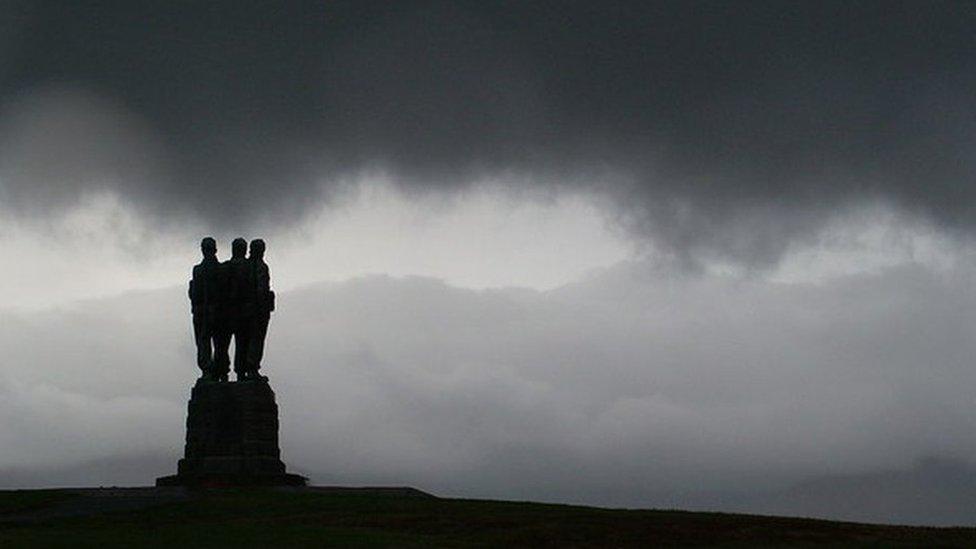
- Published2 September 2015
